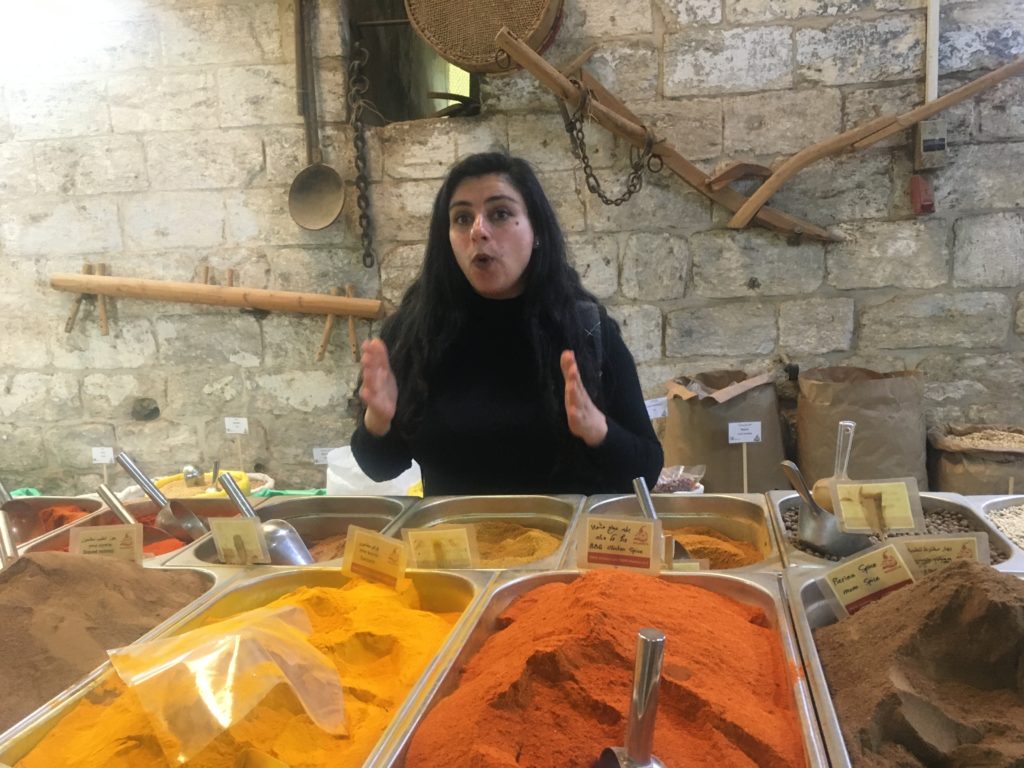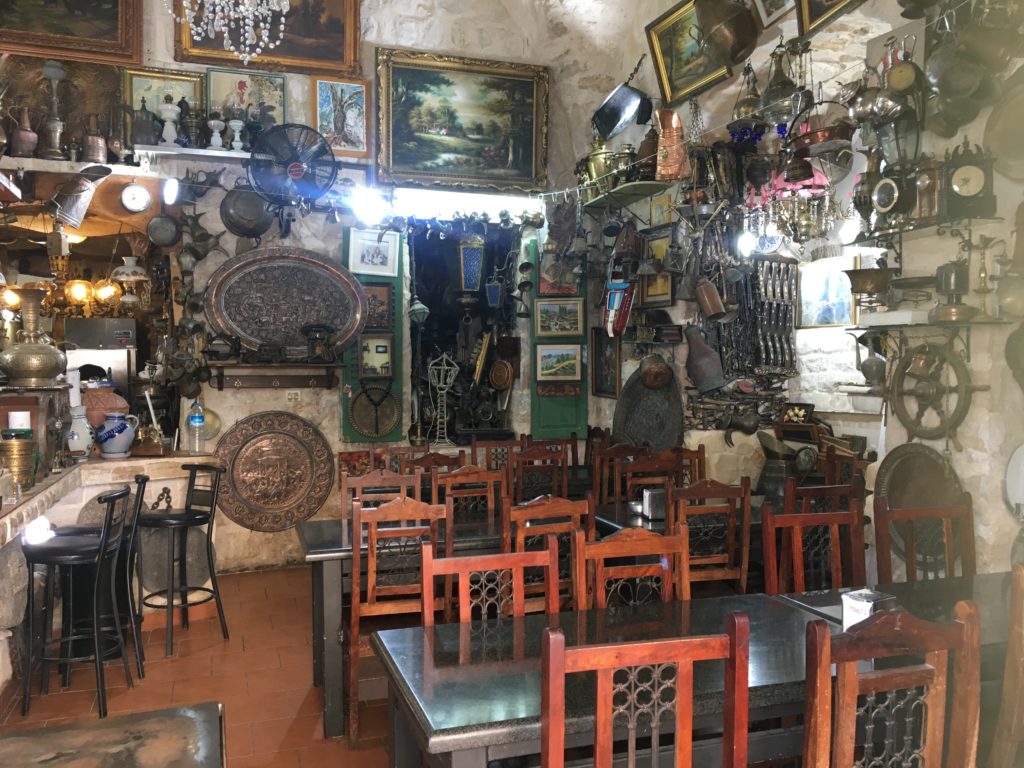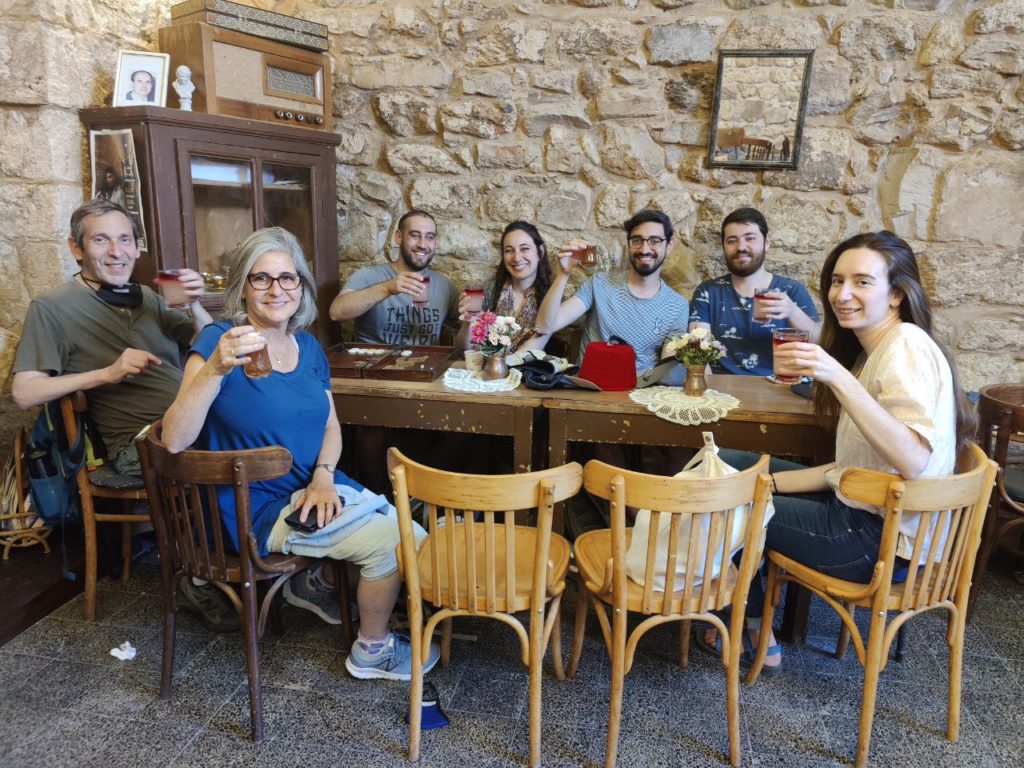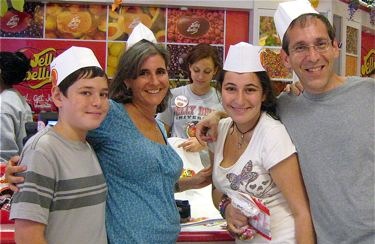For Israel Independence Day this year, we did something a bit off the beaten track. Rather than organize a Yom Ha’atzmaut barbecue in some national park, we found ourselves eating our way through Nazareth, the largest Israeli Arab city in the country and one which, despite living here for nearly 27 years, we had never been to.
We had been looking for a rental large enough to house all seven of us that wouldn’t break the bank. The Airbnb we found in Nazareth was gorgeous and reasonably priced and, although not in the center of town, it was close to the “Jesus Trail,†a hiking route that runs from Nazareth to the Sea of Galilee.Â
Nazareth, of course, is one of the highlights for Christian pilgrims who come to Israel (and will hopefully return soon, now that Israel appears to have Covid-19 under control). Just like the old joke that about the Jew stranded on a desert island who builds two synagogues – one he prays at and the other he would never set foot in – in Nazareth there are two “churches of the annunciation,†as the Catholic and Greek Orthodox communities can’t agree on where the angel Gabriel is said to have announced to Mary she would conceive a son.
We hired a tour guide, not so much to take us through the Old City – we could explore the churches on our own with a printed or online travel guide – but rather because we wanted to chow down. Mona el Abu-Assal, our energetic guide, knew just where to take us.
The last year has been tough for Mona, with incoming tourism reduced to a trickle. We could feel Mona’s joy getting back to work with our group, as well as the shopkeepers’ delight as, one after another, they effusively acknowledged her lengthy absence.
Mona’s Nazarene tasting tour has five stops, each more decadent than the one before.
We stopped first at El Mashhadawe – a hole-in-the-wall establishment that Mona insisted makes the best fatayer sabanekh, a spinach pie dipped in labaneh and sumac, that is popular around Ramadan (the holiday began the day before we arrived). Popeye would be delighted with this Lebanese nibble.
Then it was off to the Elbabour spice mill to try the freekah – a cracked wheat dish similar to quinoa. Even without the tasting, Elbabour is a must-see stop on any tour of Nazareth. Housed in a Templar-built structure from the 1800s, you can find just about any spice imaginable. Locals come bearing large bags of fresh za’atar leaves which they empty into a grinding machine that Elbabour’s proprietor offers for a fee.
Next, we tried a special kadaif made from Ramadan pancakes cooked up at Abu Ashraf’s shop. One was filled with sweet, salty cheese; the other had walnuts and cinnamon.Â
The store’s owner nearly died of Covid-19, so he is no longer allowing entrance into his elaborately decorated workplace bursting with knickknacks and antiques. Instead, he brought our kadaif to us outside. We planned to find a bench to sit down and eat them, but temptation beckoned; they were devoured before we turned the corner.
No trip to Nazareth is complete without a visit to the Abu Salem coffee shop. Founded in 1914, it claims to be the oldest café in the country. The treats here were a hot drink called inar that is festooned with nuts and cinnamon, and a refreshing cold beverage consisting of three layers: pomegranate concentrate on the bottom, hibiscus on the top, and a center filling of lemonade. The three layers somehow stay separate as you drink them. The building itself is 400 years old and a haven for local backgammon addicts.
At this point, we were already stuffed, but the final, irresistible treat was still coming: knafeh from what Mona assured us was the best in Nazareth: Mahroum’s pastry shop.Â
I’m crazy for knafeh – a Middle Eastern dessert made with shredded filo dough and sweet cheese, soaked in sugary syrup and topped with pistachio nuts – and this was by far the tastiest I’ve had, served fresh out of the frying pan. Mahroum’s makes two types – a local Nazareth version which has the classic orange coloring of knafeh, and a white “Nablus-style†knafeh which we enjoyed even more.
Our culinary adventure actually started the night before with dinner at Luna Arabic Bistro, known for its fusion take on traditional Arab ingredients. Luna’s was named to Time Out’s 2019 list of the best places to eat in Israel.
Luna, the owner and chef, has put together combinations of spices I’ve never considered residing in the same dish – for example, al-ma’ashuka, meatballs and dates topped with pistachio nuts and drenched in rose water. The dish has its roots in 13th century Syria. I can’t say that I loved it, but it was so unusual, I had to clean my plate.Â
My vegan wife, Jody, stuck with the maqluba, a popular “upside down†dish of rice and fried vegetables.Â
We never made it to the Jesus Trail, but we did go hiking along nearby Nahal Tzippori, ending up at Ein Yivka, one of the area’s larger natural swimming holes. A paved promenade accompanies the river the entire way from Moshav Shimshit, which makes it an easy walk while not detracting from the natural beauty.Â
We did the hike the day before our tasting tour de force, but now that we’re home, I think we’ll have to do some more trekking to work off all the food we ate in our non-stop culinary spin through Nazareth.







{ 1 comment… read it below or add one }
mouthwatering review.
the “seven of us” is your nuclear family and their significant others?
Also, is there some level of kashrut you followed in this tour?